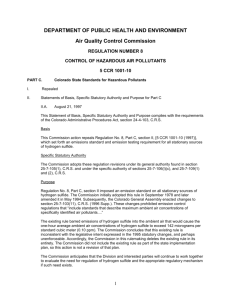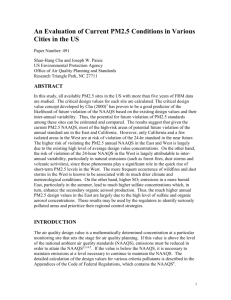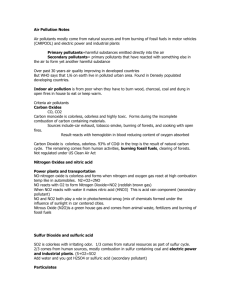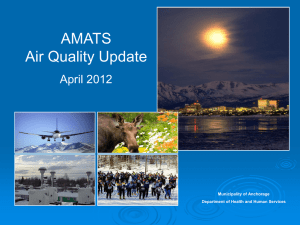Review of EPA’s Estimated Air Quality Benefits Annette C. Rohr, ScD, DABT
advertisement
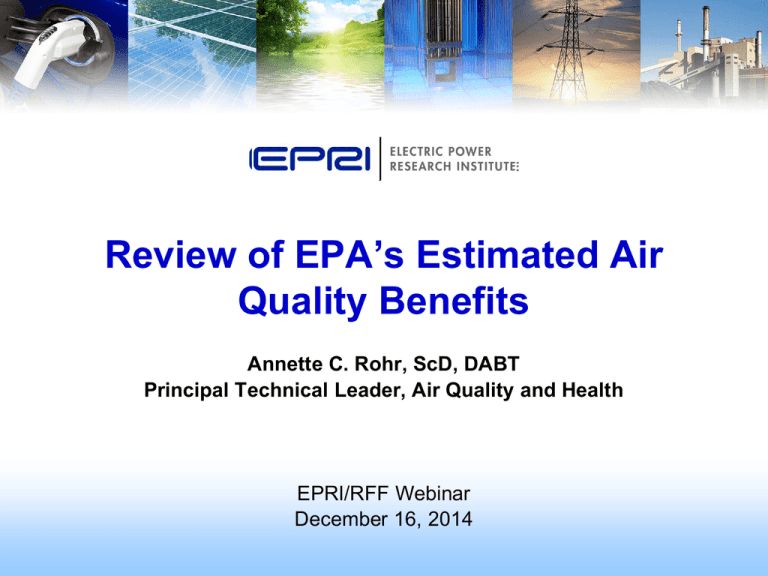
Review of EPA’s Estimated Air Quality Benefits Annette C. Rohr, ScD, DABT Principal Technical Leader, Air Quality and Health EPRI/RFF Webinar December 16, 2014 Response to Dr. Krupnick • Agreed: multiple uncertainties, issue of threshold, choice of mortality concentration-response functions – Also, extent of life shortening • My comments: delve more deeply into two issues – Mortality concentration-response functions: limitations of BenMAP – Appropriateness of accruing air quality benefits below the National Ambient Air Quality Standard (NAAQS) © 2014 Electric Power Research Institute, Inc. All rights reserved. 2 Limitations of BenMAP • Some embedded options are limited, inconsistent with literature – Three PM-mortality concentration-response functions (Krewski et al., 2009; Lepeule et al., 2012; Woodruff et al., 1997) – Smith and Gans (2014) identified 22 studies with valid C-R functions, 59 risk estimates Smith, A.E., Gans, W. 2014. Enhancing the characterization of epistemic uncertainties in PM2.5 risk analyses. Risk Analysis doi: 10.1111/risa.12236. Epub ahead of print. © 2014 Electric Power Research Institute, Inc. All rights reserved. 3 Limitations of BenMAP (continued) • No simple way to consider uncertainty within the BenMAP framework – Ranges of benefits reported, but reflect only range of C-R functions used, not any other sources of uncertainty, e.g., air quality changes, presence/absence of threshold, CIs around C-R functions, etc. – No clear way to consider impacts of simultaneously varying more than one input at a time Figure 4-1, CPP RIA © 2014 Electric Power Research Institute, Inc. All rights reserved. 4 Limitations of BenMAP (continued) • No simple way to look at thresholds Figure 3 from Smith and Gans (2014). Based on projected 2015 PM2.5 concentrations and a risk coefficient of 0.006 (Krewski et al., 2009). Estimates 127,500 deaths in 2015 if no threshold is assumed, 6000 assuming a threshold of 12 mg/m3. © 2014 Electric Power Research Institute, Inc. All rights reserved. 5 Limitations of BenMAP (continued) • Would be helpful to understand relationship between reductions in risk and location Figure 4 from Smith and Gans (2014) © 2014 Electric Power Research Institute, Inc. All rights reserved. 6 Accruing Benefits Below the NAAQS • NAAQS set at levels that will “protect the public health” with an “adequate margin of safety” ̶ Uncertainty about association only consideration for NAAQS > 0 ̶ NAAQS set at level below which uncertainty becomes too large • Figures 4-4 and 4-5 in RIA suggest ~95% of U.S. population experiences PM2.5 ≤ NAAQS of 12 μg/m3 before implementation of the proposed rule Figure 4-5, CPP RIA © 2014 Electric Power Research Institute, Inc. All rights reserved. 7 Accruing Benefits Below the NAAQS • These same populations are included in the benefits calculations – Same weights to risks for exposures < NAAQS as risks > NAAQS • Smith (2014)1: Used as example RIA from 2012 PM NAAQS rulemaking – 460-1000 avoided deaths from tightening standard from 15 to 12 mg/m3 – 70% of these due to reductions in PM2.5 from levels already < NAAQS – When reductions from PM2.5 already <12 μg/m3 are given zero weight in the expected benefits calculation, BenMAP calculates 138-313 reduced deaths/year • Benefits estimates in RIAs biased upward from expected value inferred from rationale for NAAQS Is it appropriate for health benefits to accrue at levels of PM that are already deemed to be protective of human health? 1 Smith, A.E. Submitted. Inconsistencies in risk analyses for ambient air pollutant regulations. © 2014 Electric Power Research Institute, Inc. All rights reserved. 8 Thank You! Questions/comments: Annette Rohr arohr@epri.com 425-298-4374 © 2014 Electric Power Research Institute, Inc. All rights reserved. 9

